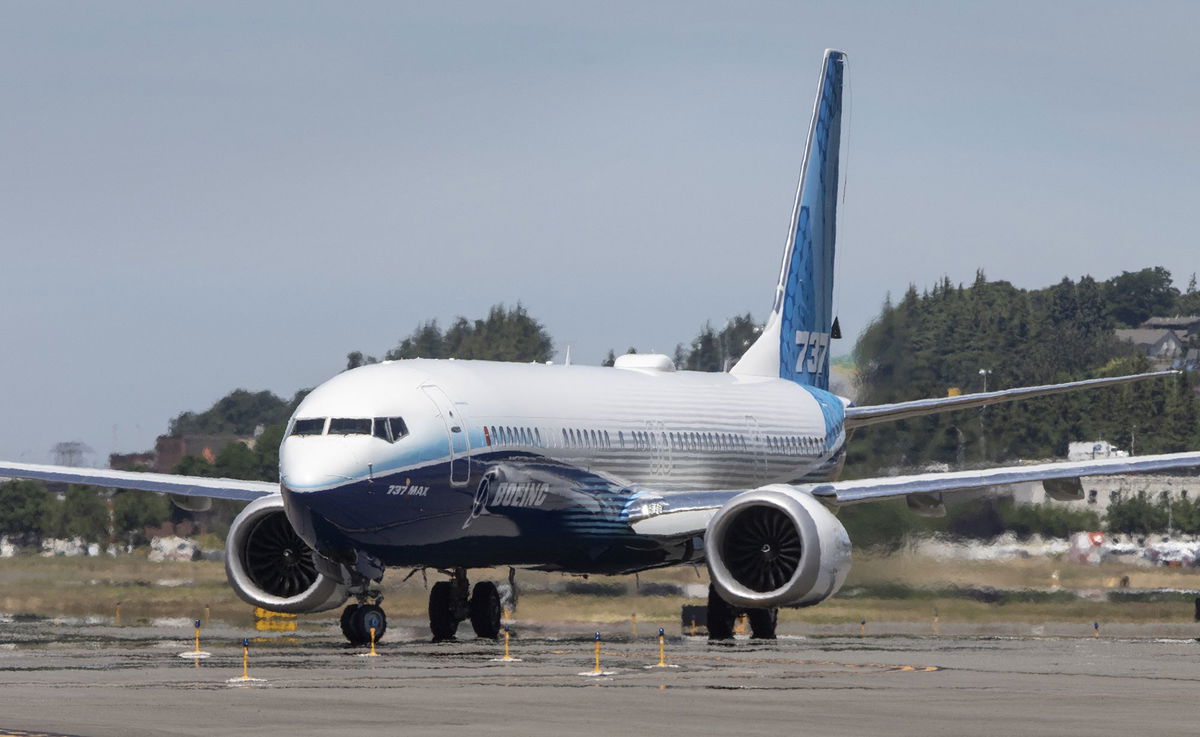Boeing CEO on 737 blowout: ‘We caused the problem’

A Boeing 737 MAX 10 airliner taxis at Boeing Field after its first flight on June 18
By Chris Isidore, Pete Muntean and Gregory Wallace, CNN
New York (CNN) — Boeing CEO Dave Calhoun said that Boeing is responsible for the incident of door plug blowing out of a 737 Max 9 in flight earlier this month, saying that Boeing must do a better job than it did in this instance.
“We caused the problem, and we understand that,” he told investors during a call after reporting the latest quarterly loss at the company. “Whatever conclusions are reached, Boeing is accountable for what happened. Whatever the specific cause of the accident might turn out to be, an event like this simply must not happen on an airplane that leaves one of our factories. We simply must be better.”
Boeing did not give the financial guidance that it normally provides to investors, nor say when it might be able to provide two new versions of the 737 Max that it has promised to airlines, but which have yet to be certified by the Federal Aviation Administration.
“While we often use this time of year to share or update our financial and operational objectives, now is not the time for that,” Calhoun said in comments to Boeing employees that were published by the company.
The January 5 incident in which a door plug blew out on an Alaska Airlines flight has put the company on the defensive once again. Fortunately, no one died, as the crew was able to make an emergency landing within minutes of the hole opening, but the brief flight terrified passengers who had cell phones and clothing ripped outside the plane. It led to a three-week grounding of the Boeing 737 Max 9 model as inspections discovered problems with the installation of other door plugs.
“I’ve had tough and direct conversations with our customers, regulators and lawmakers,” he added. “They are disappointed, and we have much to prove to earn our stakeholders’ confidence.”
Calhoun’s statements came as the manufacturer posted another loss for 2023, while failing to provide a 2024 financial outlook that would have included expectations of approval from the Federal Aviation Administration for two new versions of the jet, the longer 737 Max 10 and the shorter 737 Max 7.
In the wake of the door plug incident, the FAA has said it will not allow the company to move ahead with planned increases in production of existing models. And two major customers, United Airlines and Southwest Airlines, said last week they are pushing back plans indefinitely for deliveries they had been counting on for both models.
“Our people on the factory floor know what we must do to improve better than anyone,” Calhoun said. “We will go slow, we will not rush the system and we will take our time to do it right.”
“Increased scrutiny — whether from ourselves, from our regulator, or from others — will make us better,” he added.
In an interview Wednesday on CNBC, Calhoun said he’s not going to predict what the National Transportation Safety Board, which is conducting an investigation of the incident, will find as the cause. But he said that “I am convinced we have this [door] plug completely under control.”
The 737 Max 9 also got a vote of confidence Wednesday from Jennifer Homendy, the chair of the NTSB.
“I would have no problem getting on a Max 9 tomorrow and flying,” Homendy told CNN in an interview. “Here’s what I will say about aviation safety overall. It is safe, but there are issues.”
She said the NTSB is in the “final stages” of preparing a preliminary report on the Alaska Air incident.
“We want to make sure it’s right,” Homendy said about the agency’s preliminary findings. “This is a somewhat complex issue with a lot of parts.”
In his appearance on CNBC, Calhoun also defended the company’s decision not to give updated financial guidance. The company did say it is now producing 38 737 Max jets a month, but that is fewer than it needs to once again make a profit on its best-selling plane. The FAA’s limit on increased production of the Max in the wake of the Alaska Air incident will delay Boeing’s ability to return to profitability.
“Our full attention, our full focus as a company is to make certain we never have a safety [incident] again, to learn everything we can from the accident, learn everything we can from the FAA’s audit, learn everything we can from… the ideas given to us by our own people,” he said.
Asked if Boeing has lost the confidence of its airline customers, he said that so far the customers are telling the company they are sticking with Boeing.
“Was this a shot at them? Absolutely. As I said, these moments shake all of us to the bone – Boeing, our people, our customers, everybody,” he said. “Our job is to restore confidence at every level. They want Boeing to win. They want us to succeed.”
In what passes for good news for the troubled company, Boeing reported an adjusted loss of 47 cents a share, or about $285 million, in the fourth quarter, much better than the $1.75 a share loss a year earlier and the 78 cents a share loss estimates from analysts surveyed by Refinitiv.
The company has not only reported losses in all but one quarter since late 2019, it has almost always reported a bigger loss than forecasts.
Shares of Boeing, which have lost nearly 20% of their value since the Alaska Air incident, were narrowly higher in premarket trading Wednesday on Calhoun’s comments and the quarterly report.
The-CNN-Wire
™ & © 2024 Cable News Network, Inc., a Warner Bros. Discovery Company. All rights reserved.